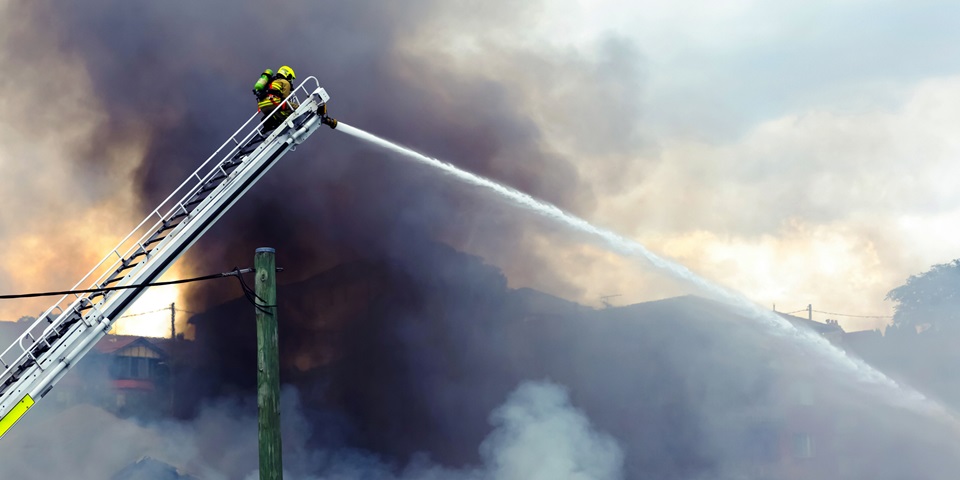
14 Oct Weathering a potential catastrophe: cladding, risk and property insurance
Following the UK Grenfell Tower fire, Australian insurers are wary of cheap cladding. Here’s what to do if it’s used on your building.
More than 70 people died when fire spread rapidly across a 24-storey West London tower block in June 2017, with most pundits believing highly flammable, cheap Chinese cladding was to blame (an official inquiry is underway).
As a result, authorities and insurance companies around the world have been quick to put new procedures and policies in place, including the Victorian Cladding Taskforce.
The Taskforce found that systems failures have led to major safety risks and widespread non-compliant use of combustible cladding explains Luke Exell, the Deputy Head of the Statewide Cladding Audit at the Victorian Building Authority (VBA).
Additionally, a preliminary audit in NSW alone identified 1,011 buildings that require investigation.
Insurance companies are now very wary of cheap cladding on buildings across Australia and in some cases are increasing premiums, which means it’s important to notify your insurer if your building uses it.
Is your building at risk?
Distinguishing combustible cladding from the more expensive, non-flammable cladding can be difficult.
That’s because aluminum composite panels (ACP) and expanded polystyrene (EPS) often resemble traditional building materials such as steel and concrete. And it’s what’s inside the ACPs, or a cement render, that makes the material dangerous in a fire.
There is no substitute for an expert review by a suitably qualified and registered building survey or, building inspector or fire engineer says Exell.
“Insurance companies are now very wary of cheap cladding on buildings across Australia and in some cases are increasing premiums, which means it’s important to notify your insurer if your building uses it”
There are some steps you can take until you can get an expert around, including reviewing the original building documents (all design, construction and approval documents) for any mentions of ACPs or EPS.
You can get these from your local council. However, products are often substituted from those specified in design documents – it’s good to know exactly what was delivered to site Exell says.
It may also help to find out when the building was constructed.
Most varieties of ACPs used pre-2011 were comprised of a 90-100% polyethylene core. This is the variety of cladding considered most dangerous” Exell says. “EPS has most commonly been used in the building industry during the past 20 years.
Risk mitigation strategies
Exell says the VBA recommends building managers or owners review the following checklist to reduce the risk of a combustible cladding catastrophe:
Ensure your essential safety measures are working and properly maintained, including exit signs, fire hydrants, early warning systems, and smoke and heat detectors.
Ensure exit paths or stairways are not used for storage.
Find out the history of your building and seek the building’s original documents from your local council.
Ask the original builder and building surveyor what materials they used.
Make sure occupants know how to reduce fire risk and what do in an evacuation.
What next?
If your building uses cladding, it’s important to check the Australian Building Codes Board website to find out if it conforms to the national standards. If it doesn’t conform, then it’s important to get in touch with your local regulatory state authority, such as the VBA.
Last but not least, it can also help to seek the services of your insurance broker.
An experienced broker will not only help ensure you meet your obligations when it comes to informing your insurer, but they can help you implement appropriate risk mitigation strategies that may even help with your insurance premiums.
Important disclaimer – Steadfast Group Limited ABN 98 073 659 677, its subsidiaries and its associates.
The views expressed are those of the author only and do not necessarily reflect those of Steadfast.
This magazine provides information rather than financial product or other advice. The content of this magazine, including any information contained on it, has been prepared without taking into account your objectives, financial situation or needs. You should consider the appropriateness of the information, taking these matters into account, before you act on any information. In particular, you should review the product disclosure statement for any product that the information relates to it before acquiring the product.
Information is current as at the date articles are written as specified within them but is subject to change. Steadfast, its subsidiaries and its associates make no representation as to the accuracy or completeness of the information. Various third parties, including Know Risk, have contributed to the production of this content. All information is subject to copyright and may not be reproduced without the prior written consent of Steadfast Group Limited.
Important disclaimer – Watkins Insurance Brokers Pty Ltd ABN 23 059 370 455, AFSL 244427.
The views expressed are those of the author only and do not necessarily reflect those of Watkins Insurance Brokers Pty Ltd.
This magazine provides information rather than financial product or other advice. The content of this magazine, including any information contained on it, has been prepared without taking into account your objectives, financial situation or needs. You should consider the appropriateness of the information, taking these matters into account, before you act on any information. In particular, you should review the product disclosure statement for any product that the information relates to it before acquiring the product.
Information is current as at the date articles are written as specified within them but is subject to change. Watkins Insurance Brokers Pty Ltd make no representation as to the accuracy or completeness of the information.
This article has been reproduced with the consent of Steadfast Group Limited.
Source: – https://www.steadfast.com.au/well-covered/insurance-for-established-business/weathering-a-potential-catastrophe-cladding-risk-and-property-insurance

